By Stephen Pratt and Anne La*
We’re in this work—you know, changing the world and stuff—to realize an impact on hard to solve social issues. We make that happen by getting wicked smart about strategy, which at its core, is about understanding what makes you unique in a complex and crowded world.
Start getting smart by asking yourself three questions:
1) Who is your client?
Who do you serve? (Why is this even a question? You know who you serve, right?)
The question reflects a critical, and often tricky, choice. You have to set boundaries about who benefits from your work—broad enough to have a meaningful impact on the problem you’re trying to address, but narrow enough that the impact is within your capabilities.
Recently, I worked with a workforce development program working to reduce unemployment. Their client could have been anybody who doesn’t have a job. But the 50-year-old with a marketing degree is dealing with a different set of challenges and barriers than the 25-year-old who dropped out of high school. Both clients have compelling needs, but if they were to try to serve both, they would need to use an intervention strategy too broad to serve either well, unless they were big enough (really big) to support two differentiated programming approaches.
In other words, you can try to please some of the people all of the time, or all of the people some of the time. You can’t do both, so understanding which path you’re on becomes your first smart strategy choice.
2) Who is your core customer?
Nonprofit translation: Who is going to pay for your work?
In our world, who you serve—your client—is rarely the same as who writes the check to pay for that service—your customer. It pays (literally) to know the distinction and make sure that you understand the interests of your customers.
Remember the some of the people/all of the people choice for clients? You have to make the same choice about your customers. Yes, revenue diversification is a good idea, but trying to serve too many kinds of customers may mean spreading yourself too thin and not fully meeting the needs of any of your customers.
We recently completed a business planning engagement for a national advocacy organization that has benefited from some big, but unpredictable, payouts from class action lawsuits. We assessed the potential of several revenue streams and concluded that they could go for: a small number of major gifts donors, a large number of small donors, or national foundation grants.
Why couldn’t they go for all three? Because each would require a different skillset in order to succeed. Their grantwriter might be great at bringing in foundation funds but probably isn’t the person who can solicit major gifts from wealthy individuals.
Particularly for smaller organizations, think about diversification within a customer category, not across customer categories.
3) What is your value proposition?
Other organizations serve the same client and lots of other organizations have the same customers. So what makes you so special?
Nonprofits tend to talk a lot about processes—having better teachers in your afterschool program, for example, or using a novel approach to tackling homework. While that may be an ingredient in your value proposition, it’s not what makes you stand out from the crowd. Your processes are important only to the extent that they make your outcomes different. At the end of the day, you’re promising something to your client and your customer—that your afterschool program with the better teachers and novel approaches is going to help kids do better in school.
Smart Strategy Keys:
- Be clear on your client and your customer.
- Don’t take on too many kinds of either.
- Define your value based on what you do, not how you do.
And last but not least, don’t do all this smart strategic thinking and then bury it. Stay disciplined about the boundaries you set around your clients and customers and be relentless about communicating your unique value.
*This article was originally posted on the Root Cause blog when the authors worked there.
Photo © Dimon Blr via Unsplash

